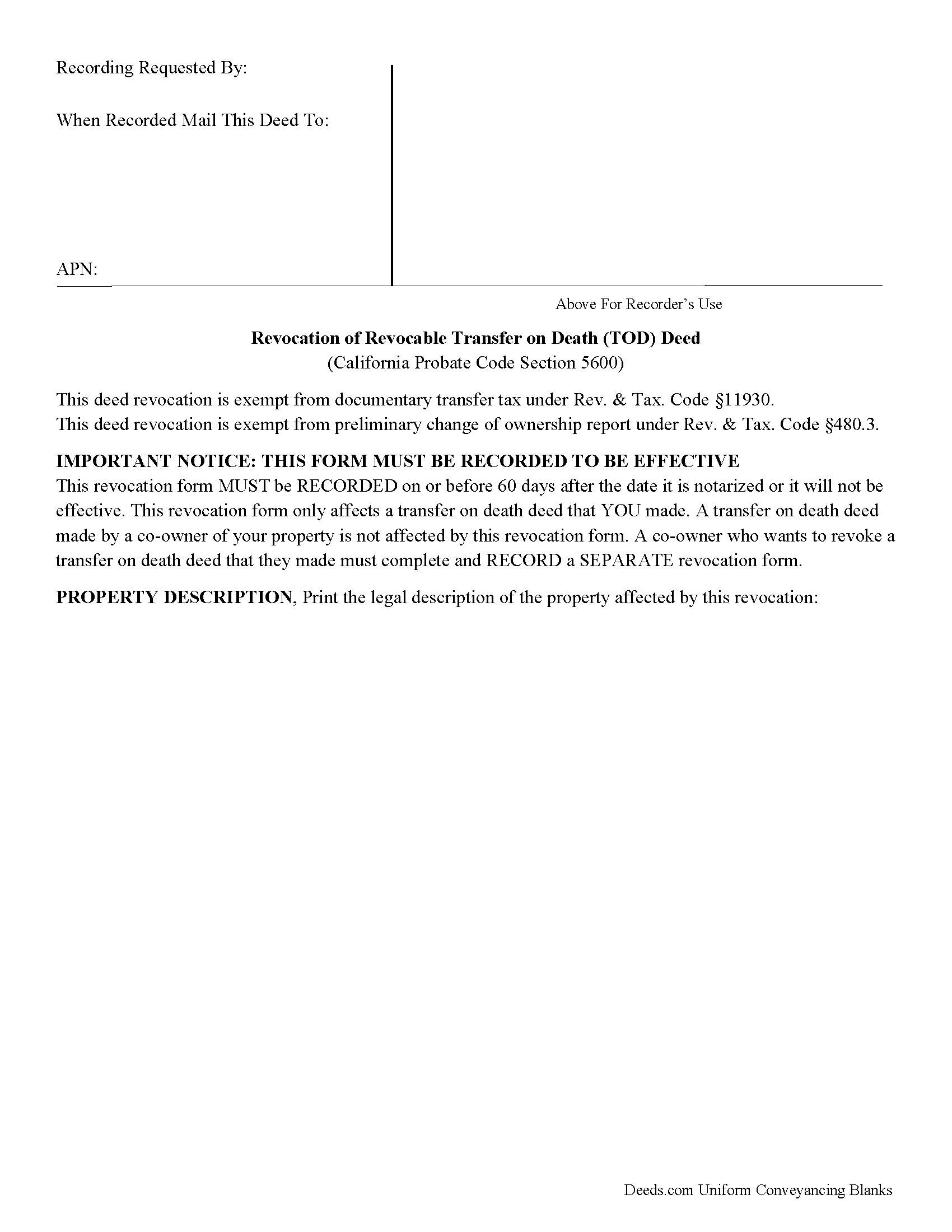Download California Transfer on Death Revocation Legal Forms

California Transfer on Death Revocation Overview

Revoking a Transfer on Death Deed in California
Transfer on death deeds allow individual landowners to transfer their real estate when they die, but outside of a will and without the need for probate. The transferor simply executes a TODD form, then records it during the course of his/her natural life, and within 60 days of the signing date (5626(a)). Unlike grant deeds or quitclaim deeds, however, there is no change in ownership when a transfer on death deed is recorded (5650).
As with transfer on death deeds, any change or revocation must be recorded DURING THE TRANSFEROR'S LIFE or it will be void.
Revocability is one of the unique features of transfer on death deeds. By retaining title to the property, it's easier for the transferor to respond to changes in circumstances or intentions. There are three ways to revoke a recorded TODD: transfer the real estate outright (in other words, use a standard deed, such as a grant or quitclaim deed, to convey the title away from the transferor); execute and record a new TODD, which automatically supersedes the previous document; or execute and record an instrument of revocation (5628-5632, 5660(c)).
While the statute allows three options for revocation, to maintain a clear title, it makes sense to record an instrument of revocation before either of the other two options. This provides a clear endpoint to the beneficiary's potential future interest, which reduces the chances for future claims against the title. Once the revocation is in place, the transferor may sell or redirect the property without worrying about the prior TODD.
Be aware, too, that the TODD is NOT affected by provisions in the owner's will (5642(b)). Best practices dictate that any change to an estate plan initiates a review of the whole thing, so to reduce the chance for conflict, make sure that the transfer on death deed, as well as any modifications or revocations, reinforces the will and other related documents.
Revoking a recorded transfer on death deed is a fairly simple process. Even so, it may not be appropriate in all cases. Contact an attorney for complex situations or with any questions.
Effective January 1, 2022 by California Senate Bill 315
A Revocation of a Revocable Transfer on Death Deed shall be signed by two persons who are both present at the same time and who witness you either signing the form or acknowledging the form. Then NOTARIZE your signature (witness signatures do not need to be notarized). RECORD the form in the county where the property is located.
(California Transfer on Death Revocation Package includes form, guidelines, and completed example)